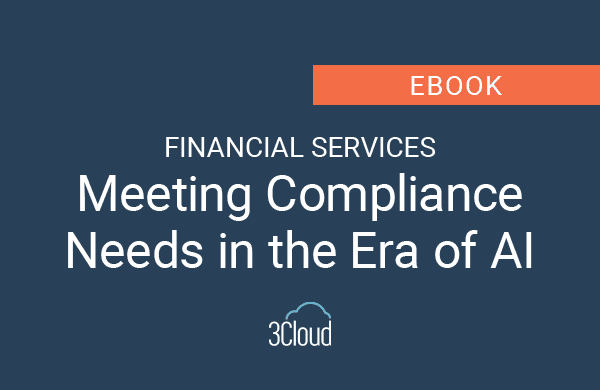The following is part 2 of a transcript from the webinar: “Top 8 Priorities When Shifting a Culture to be Data-Driven and Powered by All Employees, Not Just Some.” Portions of this transcript have been revised with added context and reduced for brevity.
What are Ways to Shift Culture in an Organization?
- Give Permission – Do your employee’s peer’s direct reports know that it’s okay to suggest new ideas driven by data?
- Motivate – How motivated are employees at your company? Do they rush to work to offer up the next big idea?
- Create a Reward System – When your company makes an earth-shattering leap based on a group of employee’s great wild ideas? Do those employees get rewarded? Is there a direct correlation between the reward and the company’s gains?
- Paint a New Mental Picture – Shifting the way you think with a paradigm shift. Do employees know how to think differently? Just separate yourself from the rest. It would be best if you thought differently. And in some cases, significantly different. Think about the taxi ten years ago, 20 years ago, think about Uber today.
- Give Power – Are you giving the power? Are you enabling do employees to have the green light and the tools to be disruptive?
- Show and Tell – Does your organization celebrate wins, even the smallest, because those are the ones that feel the big ones.
- Encourage Entrepreneurship – Perhaps my favorite at every level of your organization are people encouraged to wear the entrepreneurial hat from time to time or all the time.
- Co-Create (Let the Team Create the Solutions) – Creating a playing field in which all employees can co-create with others who are perhaps at different levels within the organization with different backgrounds or skills or titles from different business units etc.
Many people do not know this, but this approach was one of the accelerators of the COVID-19 vaccine. I don’t have a ton of time to go into how right now, but look up if you have time, look up BioNTtech and their co-creation with Pfizer. It’s saved millions of lives.
How Do I Give Employees Permission?
Let’s start by giving permission. Giving permission means letting your peers, direct reports, and management team know that it’s okay to take what’s already been defined, such as corporate strategy, vision, goals, etc., and make it even better. Every single employee must know that they too can drive the next million-dollar idea, or at least the ideas that increase your employee satisfaction score by 500 or more basis points. Most companies do an excellent job of defining who they are and where they want to go as a company.
But the opportunity that’s often missed that’s sitting right under our noses is how to engage every employee in that process or that journey. Thriving organizations have cultures that continually lose out on new ideas, for example, monthly coffee roundtables, in which people come together to go wild and brainstorm ideas.
These roundtables are open to all employees and can be accomplished with little effort and relatively low cost. The cost, I mean, I don’t know, lunch for a few very deserving teammates that said, removing obstacles means creating budgets for wild idea generation and making it known, you know, being public about that being unapologetic about that leadership should fully understand and publicly support the ROCI. Because guess what, the following big ideas are always right around the corner.
How Do I Motivate My Team to Improve Culture?
In general terms, motivation, which like culture, is something we have all talked about or read about 1000 times before, right?
When I google getting ready for this presentation and trying to develop new content, I Googled books on motivation and got over 20 million hits in less than 1.44 seconds. So, am I going to tell you anything earth-shattering and new that you don’t already know? Probably not. And that’s okay. But what I will get to be the heart of motivation and what matters when trying to enhance your culture and open the door for more fun and more innovation.
Ways to Get Started in Motivating a Team
- First things first, you need a team, a team of highly motivated, diverse, flexible, creative, vocal, passionate champions willing to help drive willing to lead by example. This is not hard to do after getting the committee approved by or, you know, whoever may care, ask for volunteers.
- Make it clear what you’re trying to do: organize a team, who will help lead a cool and exciting effort to generate the next set of groundbreaking ideas.
- Define the WIIFM, which stands for What’s In It For Me? Then, let them know and let the selection process begin.
I have found that a group of you may ask Steve, you know, how big should this group be? I don’t. I don’t have the perfect answer. But I found that a group larger than ten or less than three can be effective, so be mindful of how many people you invite to the party.
This is the committee that will help plan and execute your small cultural enhancements. The team can help you figure out how to make data and analytics part of your DNA in a fun and exciting way. Always look to be creative. Today’s workforce does not like being boring. Everything is fast. Everything is new. If work is not fun, exciting in a small dose of incremental evolution, then you’ll lose them every time, and worth noting that this will cost us dollars as well.
But remember, you have your ROCI down by now. It should be easy to convince approve that the investment is well worth it. Rely on your champion committee to help cement your value proposition.
In sports, you have two types of games. First, you have individual games like golf and tennis. And then you have team sports like baseball, football, rugby, etc. The truth is most of us as part of larger organizations benefit most from the teaming mentality, the team sports, right? Individual sports foster a certain mental toughness and personal mastery. And that’s fine. But team sports forces us to cooperate and work together to achieve common goals and which we get to celebrate together.
Namely, one company can single-handedly influence our Gross Domestic Product (GDP) – Amazon, Walmart, you know, the list goes on who is made up of a few individuals, you can’t.
It’s all about the team winning and losing together. Everyone should understand their weapon, what’s in it for me, spend time making sure it’s apparent connecting the dots. Great ideas push us closer to being the world’s most admired and socially responsible companies.
To move towards a more fruitful culture where celebrations for a job well done are every day, you must reward adequately. This does not always have to be monetary. But you know, money, my friends, will always be a motivator.
What are Incentives to Motivate My Team?
- Create a new bonus pool where teams can reward a split the prize
- Create a contest in which the winning team gets an outing
- Commit to installing a new foosball table, if all the objectives are met
- Maybe you throw a few more zeros on their paychecks. I’m sure that’ll work too.
But the point is – create obtainable goals in which the company succeeds, the team succeeds and all rewarded.
Key Takeaways:
- Permitting employees translates to giving employees a setting to brainstorm. Think coffee sessions, roundtables, or whiteboarding activities.
- Shifting your culture is a team sport, not an individual practice
- When incentivized, employees do their best work – identify the WIIFM (What’s In It For Me) when launching a new initiative.
- Incentives for employees don’t have to be monetary




